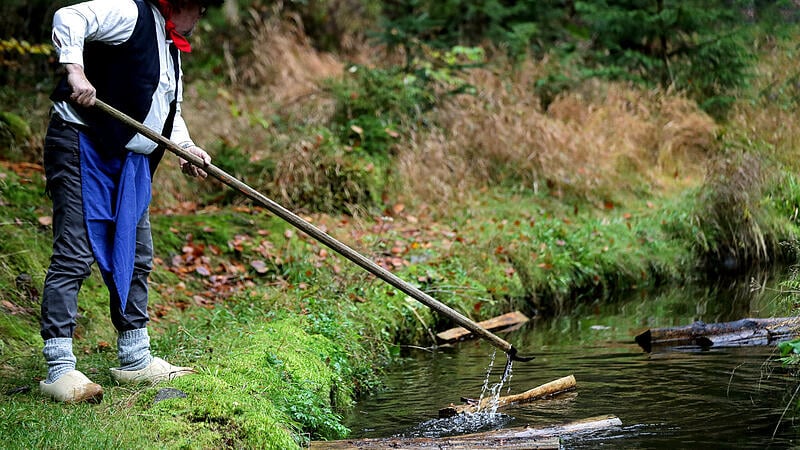Image: VOLKER Weihbold
For Gerhard Stockinger and his team of around ten flooders, the flooding season is beginning again – after all, there is no reason to complain about a lack of water. With their voluntary work on Saturday, May 20th, at the “Experience Day Floating Canal” from 10 a.m. to 4 p.m. at the Schrollebachschleuse near Oberhaag, they are reviving the old days of the wood flooding.
At 10.30 a.m., 1 p.m. and 3 p.m., the “Schwemmer” will put on a show, where visitors are also invited to wash the logs. A horseback shows how the wood was brought in with the help of animals in the past. And in the afternoon there is a duck race for children on the alluvial canal. Master blacksmith Rudolf Kehrer shows a replica device that was used to measure the canal in the past. There will be sausages, cake, coffee and drinks all day long, and the Ulrichsberg hunting horn players will also play music. There is parking for visitors at the parking lot in Oberhaag. From there, the festival can be reached via a 2.5-kilometer, well-signposted hike.
Association is to be established
“We want to make the alluvial canal interesting again with this adventure day. It doesn’t matter when you come, you can discover and learn a lot,” invites Gerhard Stockinger, who also has the vision of an association in mind that should take care of the historical legacy. Interested parties can contact the Bohemian Forest Tourist Office on 057 890-100. Incidentally, demonstration floods are also carried out at any time by prior arrangement.
watershed overcome
The 80 km long Schwarzenberg Floating Canal was built as a system of canals, locks and weirs in the years 1789 to 1823. It was conceived by forest engineer Josef Rosenauer for his employer Prince Schwarzenberg, whose wood from the Bohemian Forest came in the form of logs floating from Hirschbergen in Czech Republic via the Große Mühl near Haslach to the Danube near Neuhaus. There the logs were loaded onto ships and taken to Vienna, where wood was scarce and expensive due to the city’s rapid growth. Up to 1200 people were employed during the flooding season. The Schwemmer’s job was to provide supplies and clear log jams with the help of long hooks to keep the flood going. From 1893, more than 100 years later, the wood was transported from Haslach to Vienna on the Mühlkreisbahn, as it was faster and cheaper. The last flooding from Rosen Hügel to Haslach took place in 1930.
Source: Nachrichten




